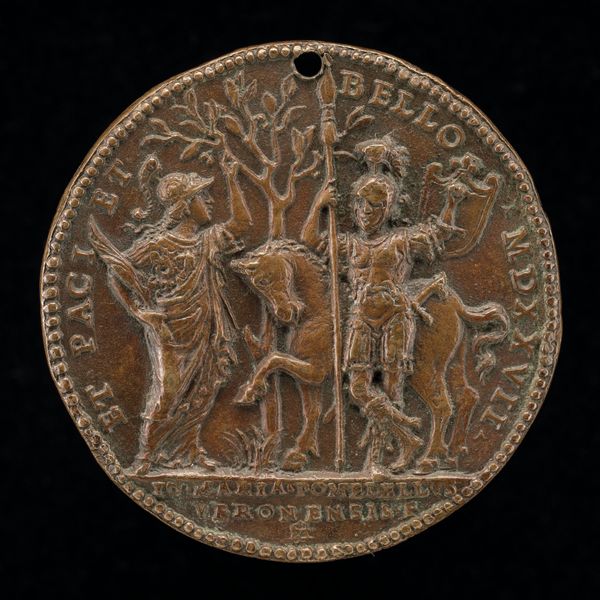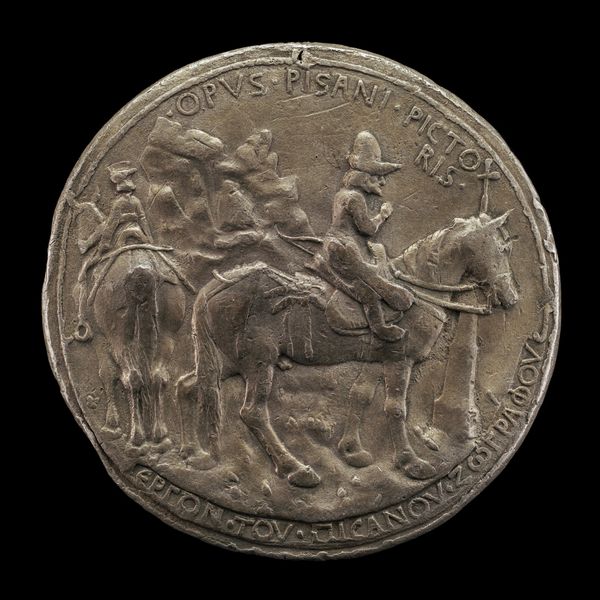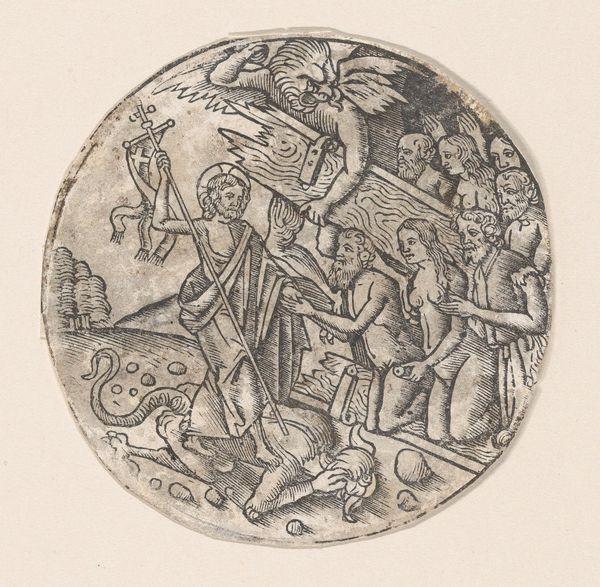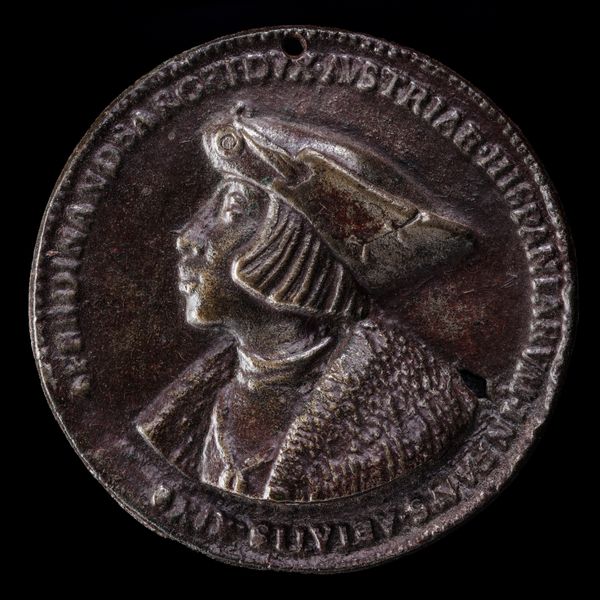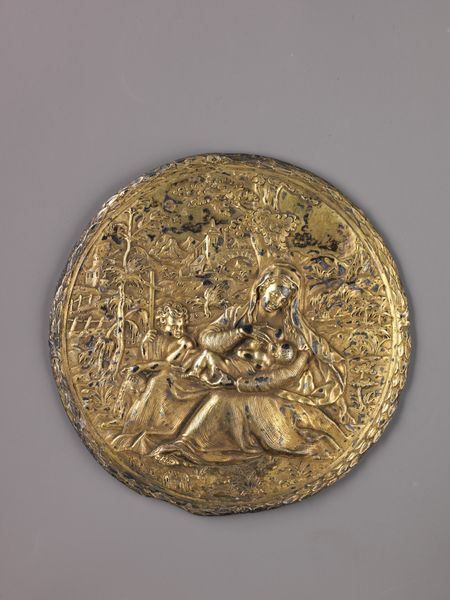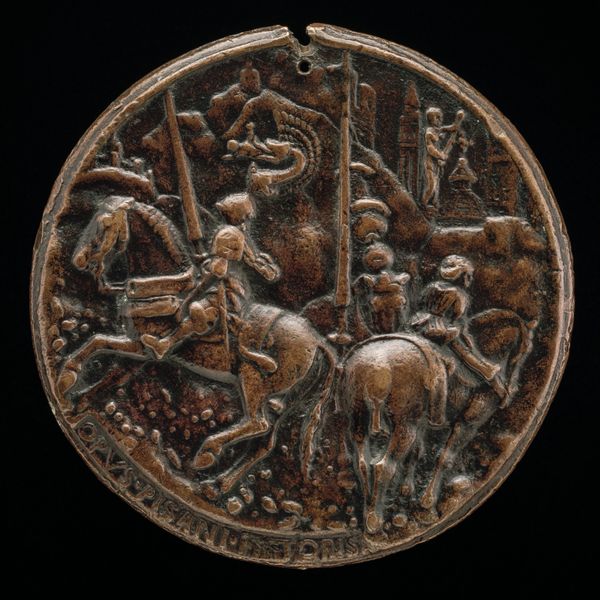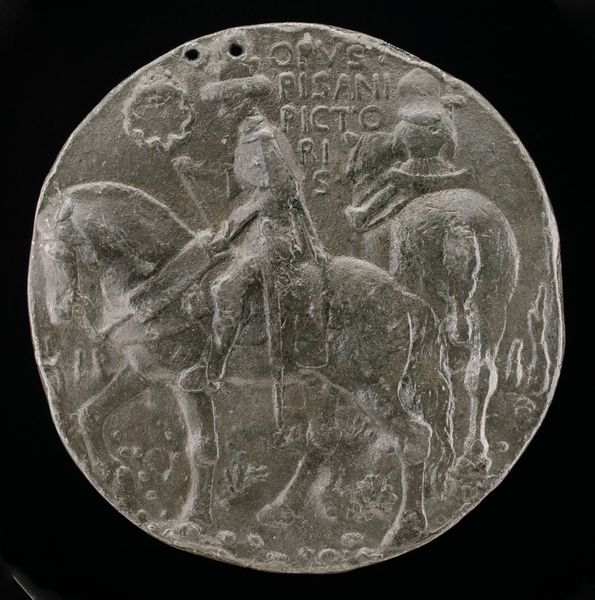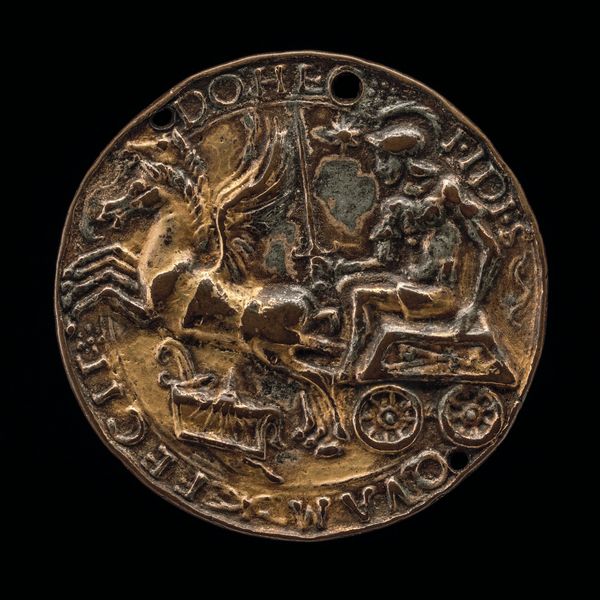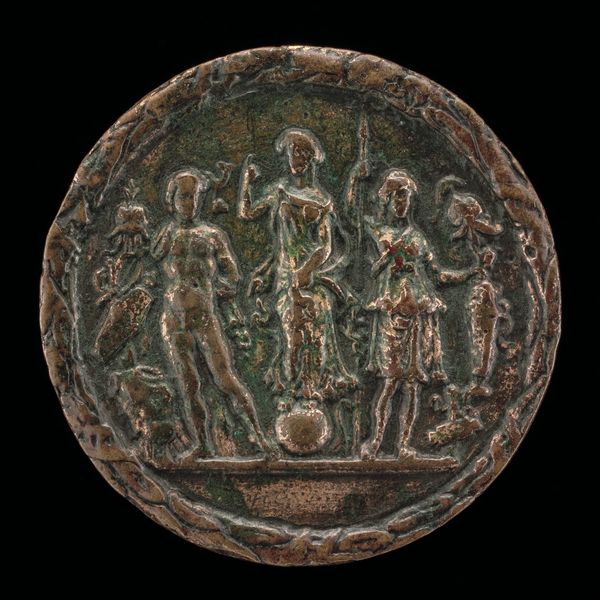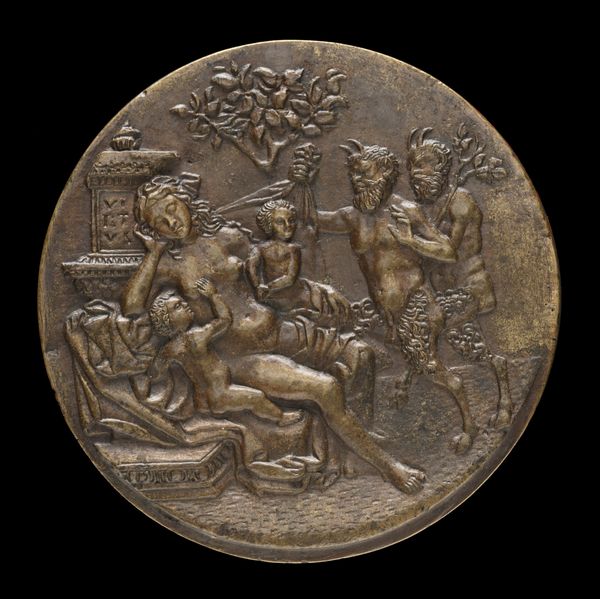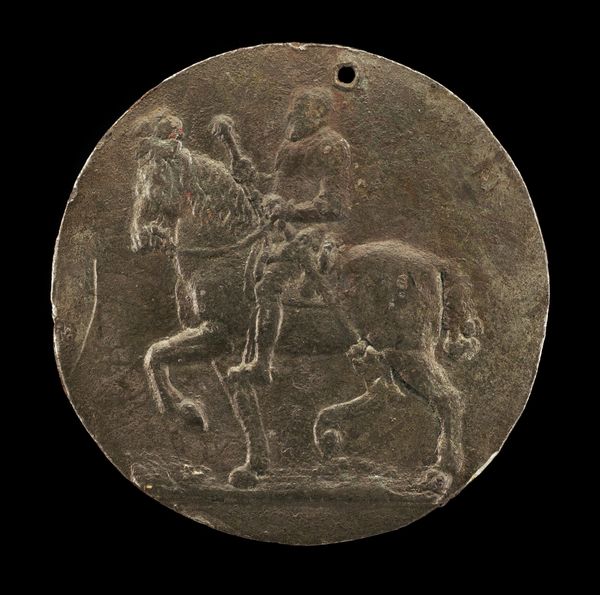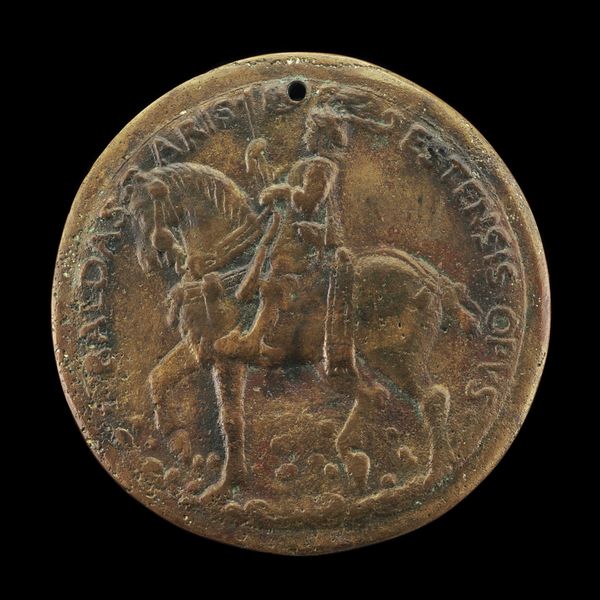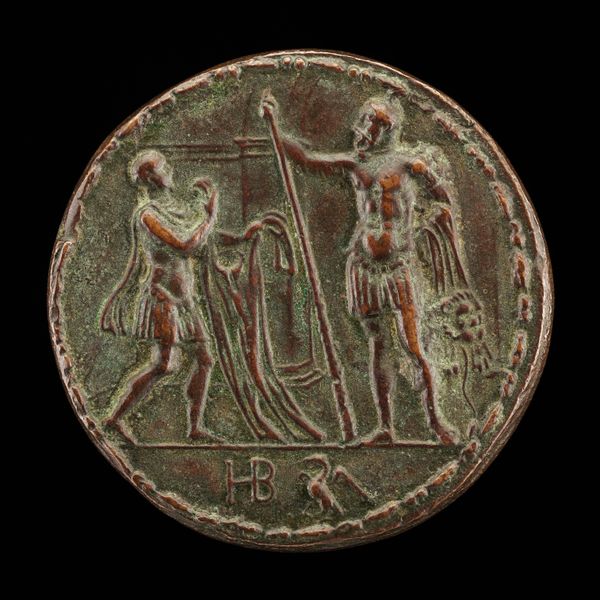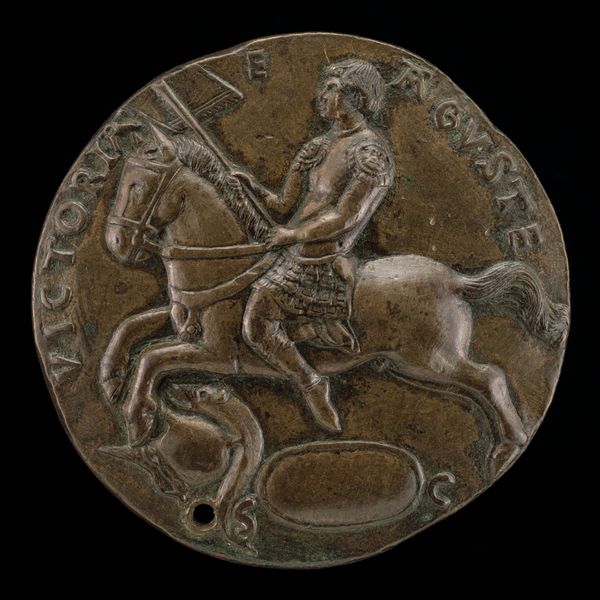
relief, bronze, sculpture
#
portrait
#
allegory
#
sculpture
#
relief
#
bronze
#
mannerism
#
sculpture
Dimensions: overall (diameter): 9.53 cm (3 3/4 in.) gross weight: 97.3 gr (0.215 lb.)
Copyright: National Gallery of Art: CC0 1.0
Curator: Here we have "Paola Carlina with Cupid", a Mannerist bronze relief dating from around 1590 to 1600, made by the artist known only as Monogrammist A.G. What are your first thoughts? Editor: Well, immediately the flatness of the relief clashes with the three-dimensionality they're trying to convey; it creates a striking tension, a sense of almost suffocating formality. Curator: Exactly! And think about the societal expectations of women at this time. How did those shape the artwork's imagery? The subject, Paola Carlina, is presented with Cupid, suggesting themes of love and perhaps idealized beauty, both constructs dictated by the male gaze of the era. Editor: And isn’t this visual language also about consolidating power? Consider how portraiture served as a political tool; these images circulated within very specific social spheres. This image emphasizes her elevated status, reinforcing the structures of power in that time. Curator: Absolutely. The institutional framework, like the patronage system, played a role in the creation of these kinds of works. These objects also shaped taste, contributing to the dominance of specific ideals and styles. Editor: It's fascinating to see the interweaving of social identity and art practice here. Consider the deliberate styling—the clothing, the gesture of Cupid, even the depiction of the woman, all working within a tight, pre-approved narrative about women's roles. Curator: I agree. I find the subtle psychological tension particularly interesting too. Her distant expression and the cupid offering her an object could be about arranged marriage or the very restricted choices available to elite women at that time. It's complex! Editor: These subtleties push me to rethink historical representations of identity. And, of course, they challenge how we approach these visual representations now, making it more pertinent to consider issues like gender, race, and representation today. Curator: Exactly, approaching historical art in that way not only helps us analyze art's cultural and political impact, but provides new tools for contemporary interpretations. Editor: This Mannerist piece becomes less about its antiquated conventions and much more about a continuing and very relevant dialogue. Curator: A dialogue still relevant now.
Comments
No comments
Be the first to comment and join the conversation on the ultimate creative platform.
